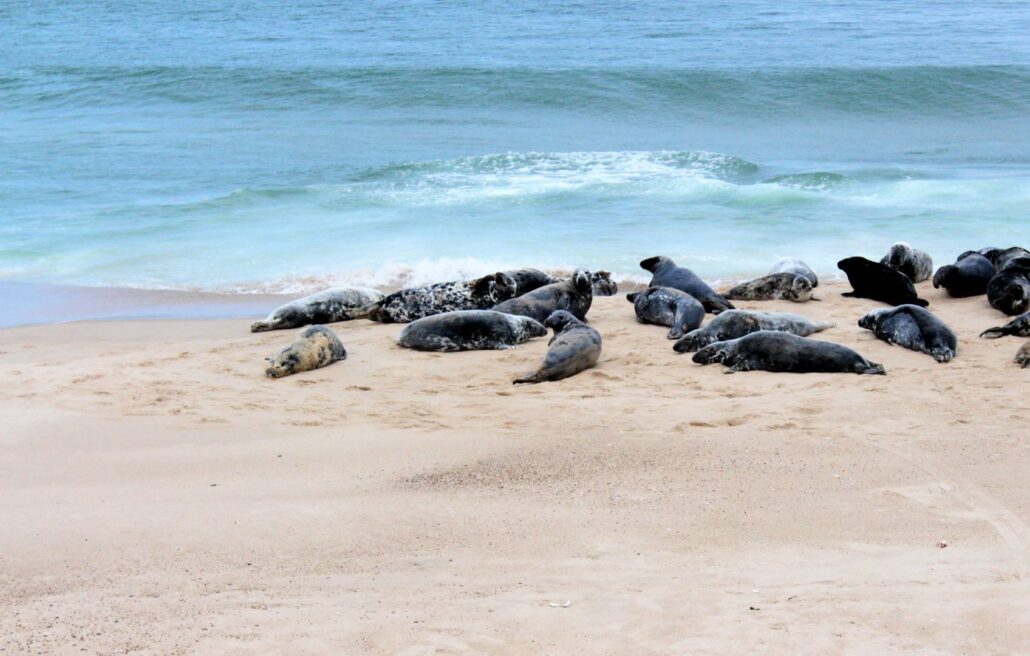If you’re from the Maritimes you’ve probably grown up hearing stories about the mysterious, isolated, and wild wind-swept sand bar known as Sable Island. Often referred to as the “Graveyard of the Atlantic,” Sable Island is a place of wonder with strange origins and untouched beauty. Located 300km southeast of Halifax, Nova Scotia, for centuries the Island has captivated and continues to intrigue explorers, researchers, artists, and travellers from around the world. You’ve likely seen photos and heard tales about the Island’s wild horses, but really how much do you actually know about Sable Island? Test your knowledge or get to know the Island a little better with our list of eleven facts about Sable Island that will surprise you!
1 - Sable Island is part of Halifax
Despite being located 290 km offshore from Halifax, Sable Island is part of the Halifax Region! In fact during 2017 provincial election, a polling station was set up for the Island’s hand full of voters for electoral district 27 Halifax Citadel – Sable Island.
2 - The Island is a lot bigger than you think
Often people ask if it’s possible to walk from one end of the thin crescent-shaped island to the other end. And unfortunately the answer is no. Sable Island is 42 km long, which is the equivalent of walking in sand from Downtown Halifax to Peggy’s Cove.
3 - There are over 500 wild horses on Sable Island!
After surviving centuries of harsh winters, the exact origins of the Sable Island Horse population are still unknown. Some believe they are the ancestors of horses that survived shipwreck, while others claim Norsemen, or John Cabot, or Portuguese explorers, or Acadians had left them on the Island. The most popular and likely explanation is that a Boston merchant hired to transport Acadians during the Expulsion put the horses on the Island.
4 - The Sable Island horses were almost removed from the Island and turned into pet food!!
In 1959, the Canadian government decided to remove the horses after a particularly harsh winter with the plan to turn most into pet food! Fortunately, thanks to letters written by children from across the country and around the world to then-prime minister John Diefenbaker, begging him to leave the horses on the Island, this never came to pass. Diefenbaker wrote their protection into law with the Canadian Shipping Act that prohibits any interference or the removal of the Sable Island Horses from the Island.
5 - There’s only one single tree on Sable Island
A scrawny pine tree planted dozens of years ago, and at a mere three-feet tall is Sable’s solitary tree. And if you were to see it, you’d think it resembled more that of a bush than a tree. Trees can’t survive the Island’s furious winds and lack of real soil to put down roots.
6 - Sable Island is a birdwatcher’s paradise.
More than 350 species of birds have been recorded on the Island, with sixteen species known to breed there. From terns, gulls, ducks, and shorebirds to more rare birds like the Ipswich sparrow and tropical species being blown north by powerful storms, Sable Island is not just for the horses, it’s also for the birds.
7 - The Island has the world’s biggest breeding colony of grey seals
Grey seals are a popular sight on the beaches of Sable Island. Harbour seals are also year-round residents but aren’t as common as the grey seals.

8 - Sable Island was home to Canada’s first life-saving station, established in 1801
With a nickname like “the Graveyard of the Atlantic” this fact real shouldn’t come as a surprise. Due to rough seas, thick fog and submerged sandbars surrounding the island there has been over 350-recorded vessels wrecked by Sable. Thanks to advances in technology and navigation, shipwrecks are extremely uncommon around the Island today. The last wreck was in 1999 by a yacht named the Merrimac, and parts of the wreckage can be found today on the Island’s South Beach.
9 - Sable Island is Canada’s 43rd National Park
The final legislation went through in December 2013 designating Sable Island a National Park Reserve. Though closed in the winter months (November through until June), June 2014 marked the first time the Island has been open to the public. This was amazing news for all of us Atlantic Canadians with childhood dreams of visiting Sable Island!
10 - Sable Island is moving
Some scientists say the island is gradually moving eastward as it slowly washes away on the west end, while sand builds on the east end, a constant state of flux as the centre of the island moves eastward. Others believe that its centre is not shifting, but that the Island is shrinking and might eventually disappear!
11 - That balloon you accidentally let fly up into the clouds… probably ended up on Sable Island
What goes up must come down. Ever wonder what happens to balloons that float up into the sky? Often they end up on Sable Island, where plastic has become much more prevalent. Discarded waste and fishing gear, along with the remains of balloons wash ashore daily. Sable Island resident and researcher Zoe Lucas gathers thousands of balloons each year and tracks their origins from the advertising written on the balloons.


